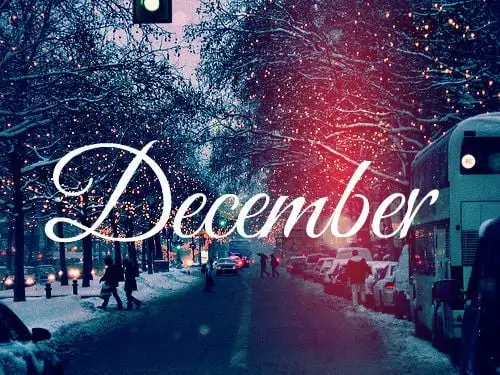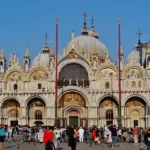
December is a month filled with significant historical events, cultural celebrations, and global observances. From commemorating important milestones to celebrating holidays, December offers a diverse range of trivia that highlights the richness of human history and tradition. Here are some fascinating facts about December that showcase its importance around the world.
December 1: World AIDS Day
World AIDS Day is observed annually on December 1, and it was first established in 1988 by the World Health Organization (WHO). The day is dedicated to raising awareness about HIV/AIDS and commemorating those who have died from the disease. Since its inception, World AIDS Day has served as a vital platform for educating the public about the realities of HIV, reducing stigma, and promoting access to prevention, testing, and treatment services. The theme for World AIDS Day changes each year to address current issues and encourage a global response to the HIV/AIDS epidemic. Over the years, the day has mobilized governments, health organizations, communities, and individuals worldwide to combat the spread of HIV and support those living with the virus. It is a reminder of the ongoing challenges and the need for continuous efforts to achieve a future free of HIV/AIDS.
December 2: International Day for the Abolition of Slavery
The International Day for the Abolition of Slavery is observed on December 2, a day designated by the United Nations General Assembly to raise awareness about contemporary forms of slavery. This includes human trafficking, sexual exploitation, child labor, forced marriage, and the forced recruitment of children for use in armed conflicts. The date marks the adoption of the United Nations Convention for the Suppression of the Traffic in Persons and of the Exploitation of the Prostitution of Others in 1949. Despite international efforts, slavery remains a significant global issue, affecting millions of people. The day aims to remind the global community of the importance of eradicating modern slavery in all its forms and reinforces the commitment to protecting human rights and ensuring freedom for all.
December 3: International Day of Persons with Disabilities
The International Day of Persons with Disabilities, celebrated on December 3, was proclaimed by the United Nations General Assembly in 1992. This day aims to promote an understanding of disability issues and mobilize support for the dignity, rights, and well-being of persons with disabilities. It also seeks to increase awareness of the benefits of integrating persons with disabilities into every aspect of political, social, economic, and cultural life. The day is marked by various events worldwide, including forums, discussions, and cultural activities, which highlight the importance of accessibility, inclusivity, and empowerment for people with disabilities. Each year, the UN announces a theme to guide activities and initiatives, addressing issues such as inclusive education, employment, accessibility, and equal opportunities.
December 5: International Volunteer Day
International Volunteer Day for Economic and Social Development, observed on December 5, was established by the United Nations in 1985. This day provides an opportunity to recognize and promote the tireless efforts of volunteers and their contributions to society. It highlights the role of volunteerism in achieving the Sustainable Development Goals (SDGs), fostering community solidarity, and building resilient and inclusive communities. Activities on this day include celebrations, advocacy campaigns, and recognition events, where volunteers and their work are honored. International Volunteer Day encourages governments and organizations to support volunteer efforts and recognizes the value of volunteering as a powerful tool for social change and community development.
December 7: Attack on Pearl Harbor
On December 7, 1941, the Japanese Imperial Navy launched a surprise military strike on the United States naval base at Pearl Harbor, Hawaii. The attack, which lasted just over two hours, resulted in significant losses: more than 2,400 American servicemen and civilians were killed, and nearly 1,200 were wounded. The assault led to the destruction or damage of eight battleships, three cruisers, and four destroyers, along with nearly 200 aircraft. The attack on Pearl Harbor marked a pivotal moment in history, as it prompted the United States to enter World War II the following day, declaring war on Japan and later on Germany and Italy. The event has been remembered annually as a solemn day of remembrance and a reminder of the sacrifices made during the war.
December 10: Nobel Prize Ceremonies
The Nobel Prize ceremonies take place on December 10 each year in Stockholm, Sweden, honoring achievements in Physics, Chemistry, Physiology or Medicine, Literature, and Economic Sciences. The Nobel Peace Prize, however, is awarded separately in Oslo, Norway. The date marks the anniversary of the death of Alfred Nobel, the Swedish inventor, engineer, and industrialist who established the prizes in his will. Nobel Prizes are awarded to individuals and organizations that have made significant contributions in their respective fields. The ceremonies are followed by a banquet attended by the Swedish royal family, laureates, and other dignitaries. Winning a Nobel Prize is considered one of the highest honors and recognizes outstanding contributions to humanity.
December 12: First Successful Human Organ Transplant
On December 12, 1954, Dr. Joseph Murray and his team at Peter Bent Brigham Hospital in Boston, Massachusetts, performed the first successful human organ transplant. They transplanted a kidney from one identical twin, Ronald Herrick, to his brother, Richard Herrick, who was suffering from chronic kidney failure. The operation was a groundbreaking achievement in medical history, demonstrating that organ transplantation could be a viable treatment for end-stage organ failure. This success laid the foundation for future developments in transplant medicine, including the use of immunosuppressive drugs to prevent organ rejection. Dr. Murray’s work earned him the Nobel Prize in Physiology or Medicine in 1990, highlighting the significance of this medical milestone.
December 15: Ratification of the Bill of Rights
The Bill of Rights, comprising the first ten amendments to the United States Constitution, was ratified on December 15, 1791. These amendments were introduced to guarantee essential civil liberties and limit the government’s power, addressing concerns raised by Anti-Federalists during the Constitution’s ratification process. The Bill of Rights includes protections for freedom of speech, religion, and the press, the right to assemble and petition the government, the right to bear arms, and protections against unreasonable searches and seizures, among others. It has become a cornerstone of American democracy, ensuring the protection of individual freedoms and rights. December 15 is now celebrated as Bill of Rights Day in the United States, honoring these fundamental principles.
December 21: Winter Solstice
The winter solstice occurs around December 21 in the Northern Hemisphere and marks the shortest day and longest night of the year. This astronomical event occurs when one of the Earth’s poles reaches its maximum tilt away from the Sun, resulting in the Sun’s lowest daily maximum elevation in the sky. The winter solstice has been observed and celebrated by various cultures throughout history, often symbolizing rebirth and the return of light. In many traditions, it marks the beginning of winter. Celebrations vary across the globe, from the ancient Roman festival of Saturnalia to modern-day Yule and other solstice festivals. The winter solstice serves as a reminder of the changing seasons and the cycles of nature.
December 25: Christmas Day
Christmas Day, celebrated on December 25, commemorates the birth of Jesus Christ, who is considered by Christians to be the Son of God and the Savior of humanity. The holiday has been observed for centuries and has evolved to incorporate various cultural traditions and customs, including gift-giving, festive decorations, feasting, and attending religious services. The date of December 25 was chosen to coincide with existing pagan winter festivals, such as the Roman Saturnalia and the celebration of Sol Invictus, making it easier for early Christians to adopt the holiday. Today, Christmas is celebrated by millions of people worldwide, both religiously and secularly, making it one of the most widely observed holidays. It is a time of joy, family gatherings, and generosity, reflecting the spirit of goodwill and peace.
December 26: Boxing Day
Boxing Day is celebrated on December 26, primarily in the United Kingdom, Canada, Australia, and New Zealand. The day originated as a time for giving gifts to those less fortunate and to service workers who provided services throughout the year. The term “Boxing Day” comes from the tradition of employers giving their employees Christmas boxes containing money, food, or presents. Historically, churches also opened their alms boxes to distribute to the poor on this day. Today, Boxing Day is often associated with shopping and sports events. It marks the beginning of post-Christmas sales, with many people taking advantage of discounts and bargains, while others enjoy various sporting events, such as football matches and horse racing.
December 31: New Year’s Eve
New Year’s Eve, celebrated on December 31, marks the final day of the Gregorian calendar year. It is a global celebration that signifies the transition from one year to the next. Festivities often include parties, fireworks, and countdowns to midnight when the New Year officially begins. Traditions vary by country and culture, but common themes include reflection on the past year, resolutions for the coming year, and spending time with friends and family. In many places, New Year’s Eve is marked by large public gatherings, such as the famous ball drop in Times Square, New York City. The day is synonymous with celebration, hope, and renewal as people look forward to the possibilities and opportunities of the year ahead.
December Birthstone: Turquoise, Tanzanite, and Zircon
December is unique in having three official birthstones: turquoise, tanzanite, and zircon. Turquoise, known for its blue-green hue, has been cherished since ancient times for its protective and healing properties. It is believed to bring good fortune and ward off negative energy. Tanzanite, a relatively new gemstone discovered in 1967 in Tanzania, is valued for its deep blue to violet color. It is a rare gem that is said to stimulate spiritual awareness and aid in communication. Zircon, which comes in various colors but is most famous for its bright blue variety, is the oldest mineral on Earth, often used as a symbol of wisdom and prosperity. Together, these stones offer a rich variety of choices for those born in December, each with its unique history and symbolism.
December Zodiac Signs: Sagittarius and Capricorn
December is associated with two zodiac signs: Sagittarius and Capricorn. Sagittarius, covering November 22 to December 21, is symbolized by the archer and is known for being adventurous, optimistic, and freedom-loving. People born under this sign are often seen as enthusiastic, curious, and open-minded, with a desire for knowledge and exploration. Capricorn, from December 22 to January 19, is represented by the goat and is characterized by discipline, practicality, and ambition. Capricorns are often perceived as responsible, determined, and hardworking, with a strong sense of duty and a goal-oriented mindset. Both signs bring unique qualities to those born in December, reflecting a blend of expansive optimism and grounded pragmatism.
December Weather
In the Northern Hemisphere, December is typically associated with winter weather, characterized by colder temperatures, snow, and shorter daylight hours. The month marks the beginning of winter, which officially starts with the winter solstice around December 21. Weather conditions vary significantly by region: some areas experience heavy snowfall and freezing temperatures, while others may have milder, rainy conditions. In contrast, the Southern Hemisphere experiences summer during December, with warmer temperatures, longer days, and often a festive holiday atmosphere. This seasonal contrast highlights the diverse climatic experiences across the globe, influencing activities, traditions, and celebrations throughout the month.
December 2019: Record Global Temperatures
December 2019 recorded global temperatures that were among the highest on record, continuing a trend of rising temperatures due to climate change. This month capped off a decade that was the warmest in recorded history, with significant impacts observed worldwide, including extreme weather events, melting glaciers, and rising sea levels. The data from December 2019 reflected an ongoing pattern of global warming driven by increased greenhouse gas emissions from human activities, such as burning fossil fuels and deforestation. Scientists and environmental organizations used these findings to call for urgent action to mitigate climate change and promote sustainable practices to protect the planet for future generations.
December 17, 1903: Wright Brothers’ First Flight
On December 17, 1903, Orville and Wilbur Wright made history by completing the first successful powered flight in Kitty Hawk, North Carolina. Orville piloted the aircraft, known as the Wright Flyer, for 12 seconds over a distance of 120 feet. This achievement marked the beginning of modern aviation, demonstrating that controlled, sustained flight was possible. The Wright brothers, who were self-taught engineers and aviation pioneers, conducted numerous experiments with gliders before achieving powered flight. Their work revolutionized transportation and opened up new possibilities for travel, commerce, and communication. The anniversary of this flight is now celebrated as a major milestone in the history of aviation.
December 24: Christmas Eve
Christmas Eve, celebrated on December 24, is a day of anticipation and preparation for Christmas Day, particularly in Christian communities around the world. Traditionally, it is a time for family gatherings, decorating Christmas trees, and preparing festive meals. Many cultures observe Christmas Eve with religious services, such as midnight Mass, carol singing, and nativity plays, commemorating the birth of Jesus Christ. In some countries, Christmas Eve is the main day for gift-giving, with customs such as leaving out stockings for Santa Claus or setting up elaborate holiday displays. The evening is often marked by a sense of warmth, reflection, and excitement, as people come together to celebrate the holiday season.
December 25, 336 AD: First Recorded Christmas Celebration
The first recorded celebration of Christmas on December 25 occurred in Rome in 336 AD. This date was chosen to coincide with the Roman festival of Sol Invictus, or “Unconquered Sun,” a pagan festival celebrating the winter solstice and the return of longer days. By selecting December 25, early Christians aimed to facilitate the adoption of Christmas by aligning it with existing pagan traditions. Over time, Christmas spread throughout the Roman Empire and became one of the most significant Christian holidays, commemorating the birth of Jesus Christ. The establishment of December 25 as the date for Christmas marked the beginning of a tradition that would evolve over the centuries, incorporating various cultural customs and becoming a global celebration.
December 31, 2000: End of the 20th Century and Millennium
December 31, 2000, marked the last day of the 20th century and the second millennium, leading to widespread celebrations around the world. This date was significant because it closed out a thousand-year period, prompting reflections on the past and hopes for the future. Celebrations included large public gatherings, fireworks displays, and parties as people welcomed the start of the 21st century and the third millennium. The event was marked by a sense of optimism and anticipation for technological advancements, social progress, and global cooperation. However, it also served as a moment to remember significant historical events and achievements from the previous millennium, setting the stage for a new era in human history.
December 2018: Longest U.S. Government Shutdown
In December 2018, the United States experienced a government shutdown that lasted 35 days, from December 22, 2018, to January 25, 2019. This was the longest shutdown in U.S. history, surpassing previous records. The shutdown occurred due to a political impasse between President Donald Trump and Congress over funding for a border wall along the U.S.-Mexico border. The shutdown affected approximately 800,000 federal workers, who were either furloughed or required to work without pay. Numerous government services were disrupted, including national parks, museums, and various federal agencies, leading to widespread public and economic impact. The shutdown ended when President Trump signed a temporary funding bill to reopen the government without securing immediate funding for the wall, setting the stage for further negotiations on border security.
December 14, 1799: Death of George Washington
On December 14, 1799, George Washington, the first President of the United States and a Founding Father, passed away at his Mount Vernon estate in Virginia. Washington, aged 67, died from a severe throat infection, believed to be acute bacterial epiglottitis, after a brief illness. His death marked the end of an era in American history, as he was widely respected for his leadership during the American Revolutionary War and his role in shaping the newly independent United States. Washington’s passing was met with widespread mourning across the nation and the world. His legacy as a statesman and his commitment to republican values and democracy continue to be celebrated in the United States.
December 6: St. Nicholas Day
St. Nicholas Day, celebrated on December 6, honors the patron saint of children, sailors, and many others. St. Nicholas was a 4th-century bishop from Myra, in what is now Turkey, known for his generosity, kindness, and numerous miracles attributed to him. The day is celebrated in many countries, particularly in Europe, with various customs and traditions. In some cultures, children receive gifts, candy, or small treats left in their shoes or stockings the night before St. Nicholas Day, reminiscent of the saint’s legendary acts of giving. St. Nicholas is also the historical figure behind the modern-day Santa Claus, and his feast day serves as a precursor to the Christmas season.
December 1-24: Advent Calendars
Advent calendars are used from December 1 to December 24 in many cultures to count down the days leading up to Christmas. The tradition of Advent calendars dates back to the mid-19th century in Germany, where families would mark the days of Advent by lighting candles or making chalk marks on doors. Modern Advent calendars often feature small windows or doors that open to reveal a picture, chocolate, toy, or other small gifts, making the countdown to Christmas an exciting experience for children and adults alike. The practice has evolved over time and now includes a variety of themes and formats, from religious to secular, offering a daily reminder of the approaching holiday and adding to the festive spirit.
December 2020: COVID-19 Vaccine Rollout
In December 2020, the COVID-19 vaccine rollout began in several countries, marking a significant milestone in the global fight against the pandemic. The first vaccines to be distributed widely were developed by Pfizer-BioNTech and Moderna, both of which used mRNA technology to create an immune response against the SARS-CoV-2 virus. The rollout started with high-risk groups, including healthcare workers, the elderly, and those with underlying health conditions, followed by the general population. The introduction of the vaccines provided hope for ending the pandemic, which had caused widespread illness, death, and economic disruption worldwide. The swift development and deployment of the vaccines represented a remarkable scientific achievement and a crucial step toward global recovery.
Frequently Asked Questions About December
Holidays and Celebrations
- What is the most popular holiday in December?
- Christmas is the most widely celebrated holiday in December. It is observed by Christians to commemorate the birth of Jesus Christ.
- What other holidays are celebrated in December?
- Other popular December holidays include:
- Hanukkah: A Jewish festival of lights celebrated over eight nights.
- Kwanzaa: A celebration of African-American culture and heritage.
- New Year’s Eve: The last day of the year, often marked with parties and fireworks.
- Other popular December holidays include:
- What are some traditional December customs and traditions?
- Some common December traditions include:
- Decorating Christmas trees
- Giving and receiving gifts
- Sending greeting cards
- Baking holiday treats
- Singing carols
- Attending holiday parties
- Watching holiday movies
- Some common December traditions include:
Weather and Climate
- What is the weather like in December in the Northern Hemisphere?
- December is typically cold and snowy in the Northern Hemisphere, especially in regions closer to the Arctic.
- What is the weather like in December in the Southern Hemisphere?
- December is typically warm and sunny in the Southern Hemisphere, with temperatures similar to summer months.
Cultural and Historical Significance
- What is the origin of the word “December”?
- The word “December” comes from the Latin word “decem,” which means “ten.” It was originally the tenth month of the Roman calendar before January and February were added.
- What are some historical events that occurred in December?
- Some significant historical events that took place in December include:
- The Battle of Pearl Harbor (December 7, 1941)
- The signing of the Declaration of Independence (July 4, 1776)
- The first manned spaceflight (April 12, 1961)
- Some significant historical events that took place in December include:
Other Interesting Facts
- What is the shortest day of the year?
- The shortest day of the year is the winter solstice, which typically occurs on December 21 or 22 in the Northern Hemisphere.
- What is the Geminid meteor shower?
- The Geminid meteor shower is one of the most spectacular meteor showers of the year, peaking around December 13-14.
- What is the birthstone for December?
- The birthstones for December are turquoise, zircon, and tanzanite.









